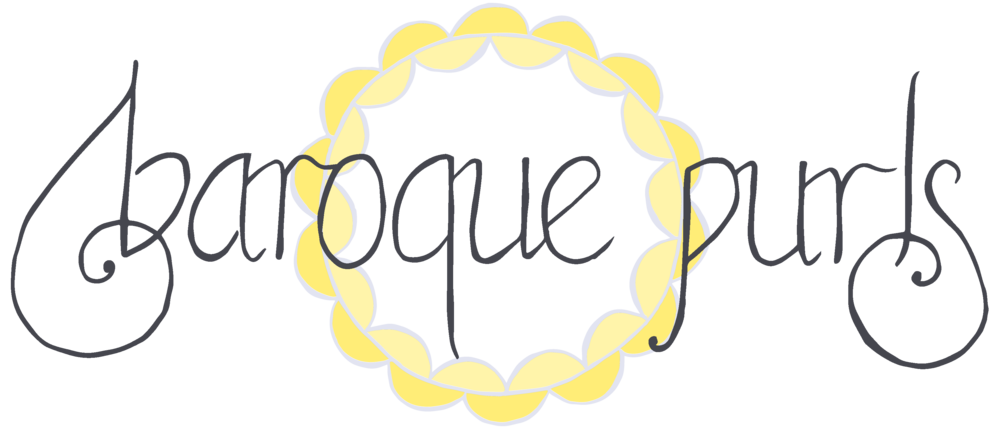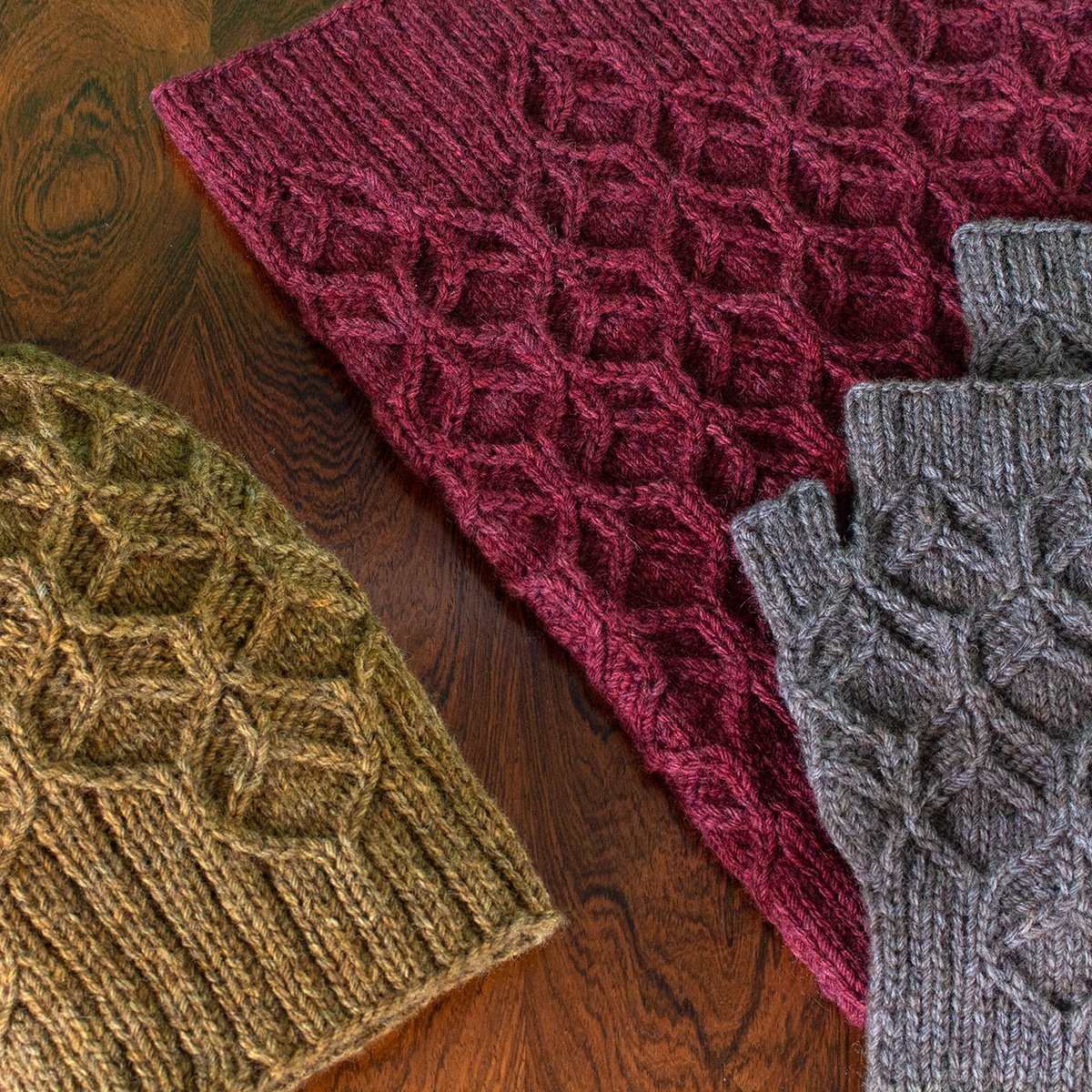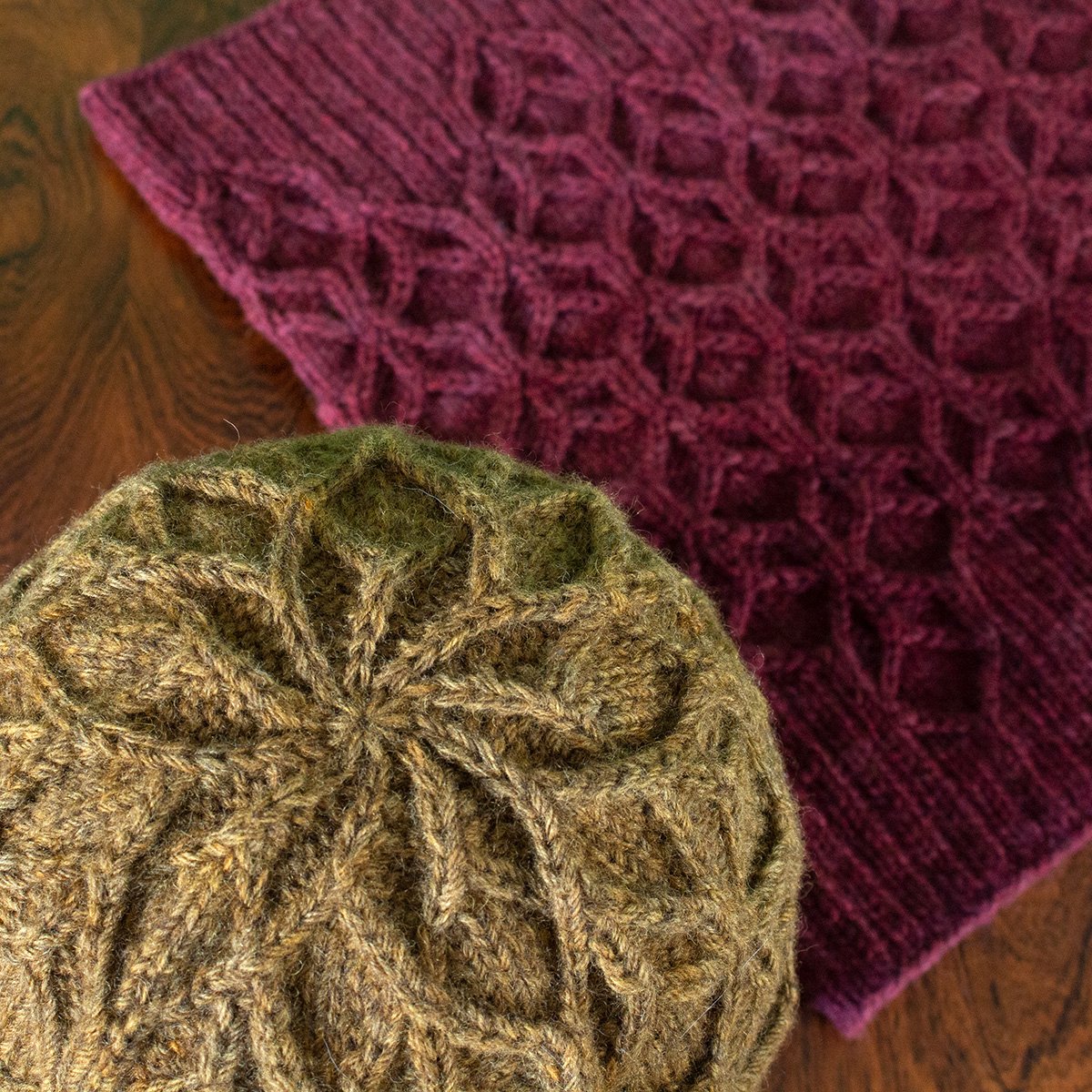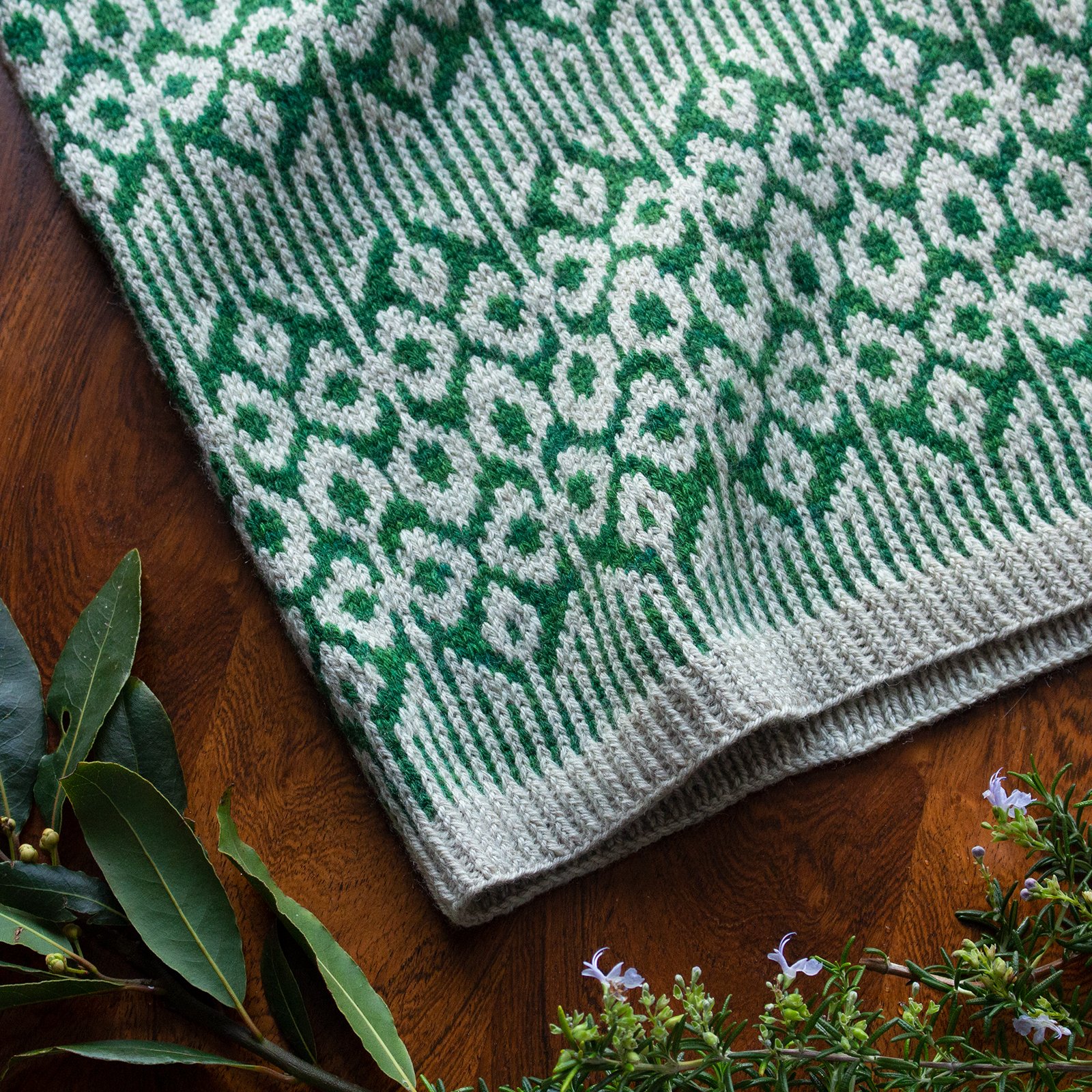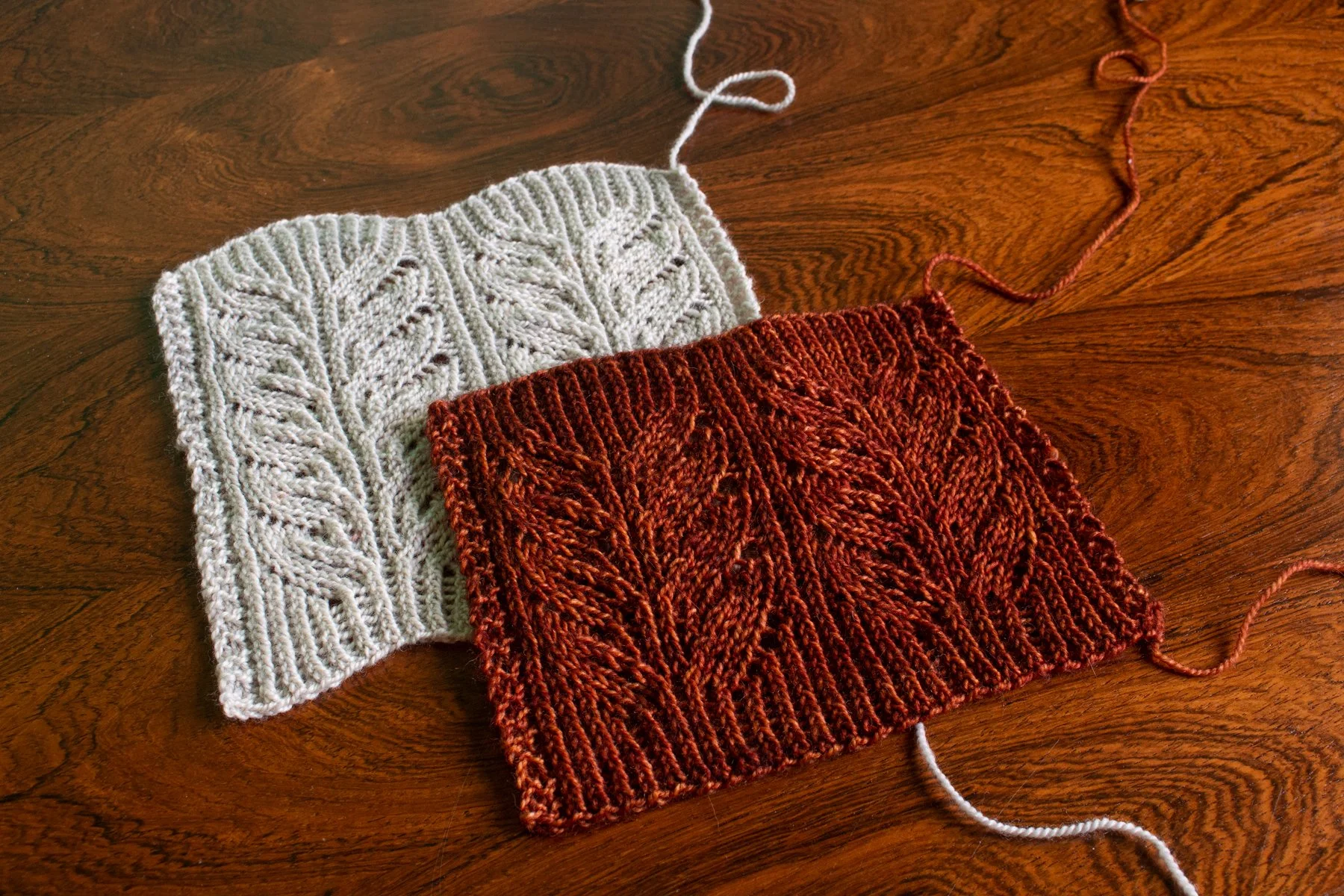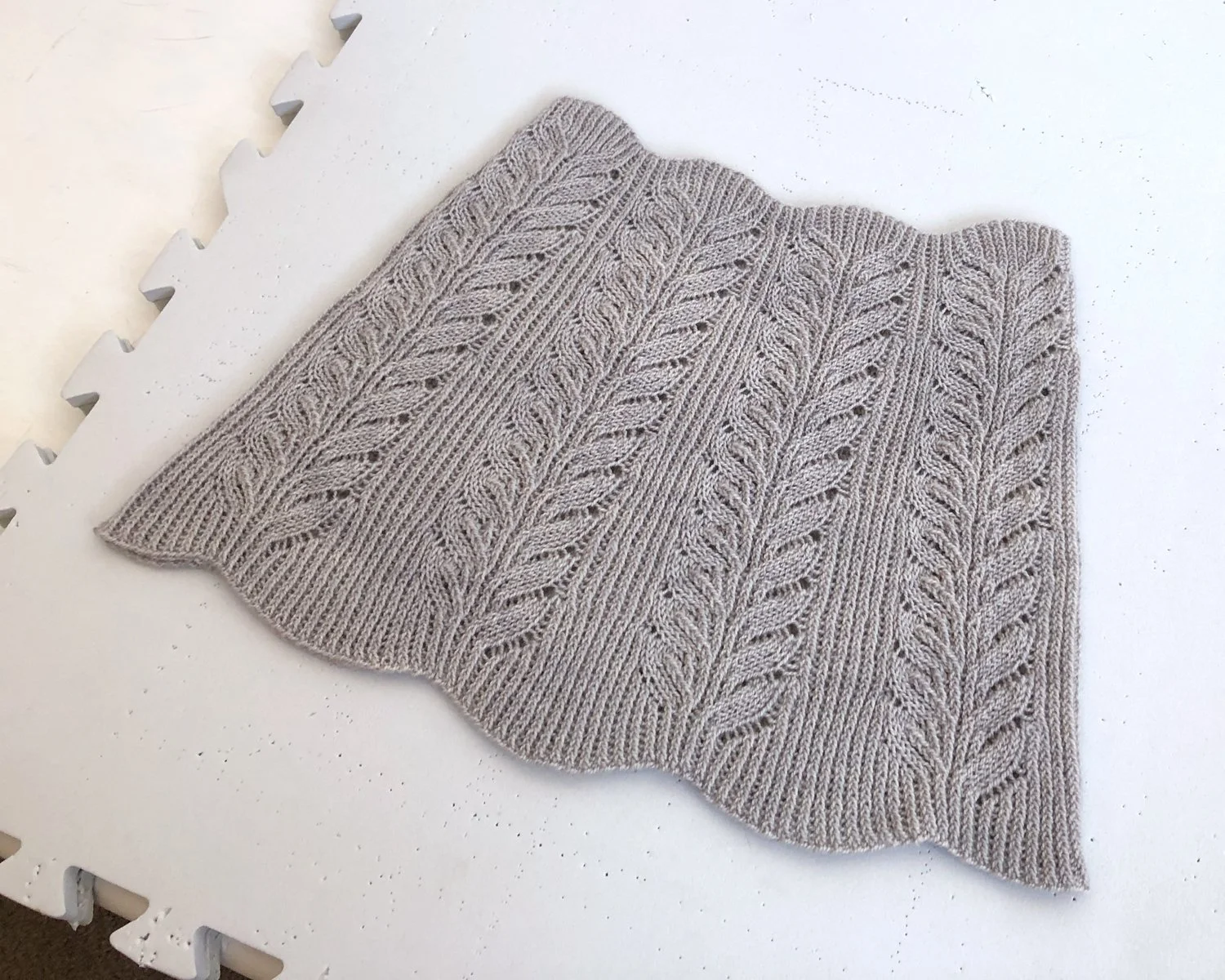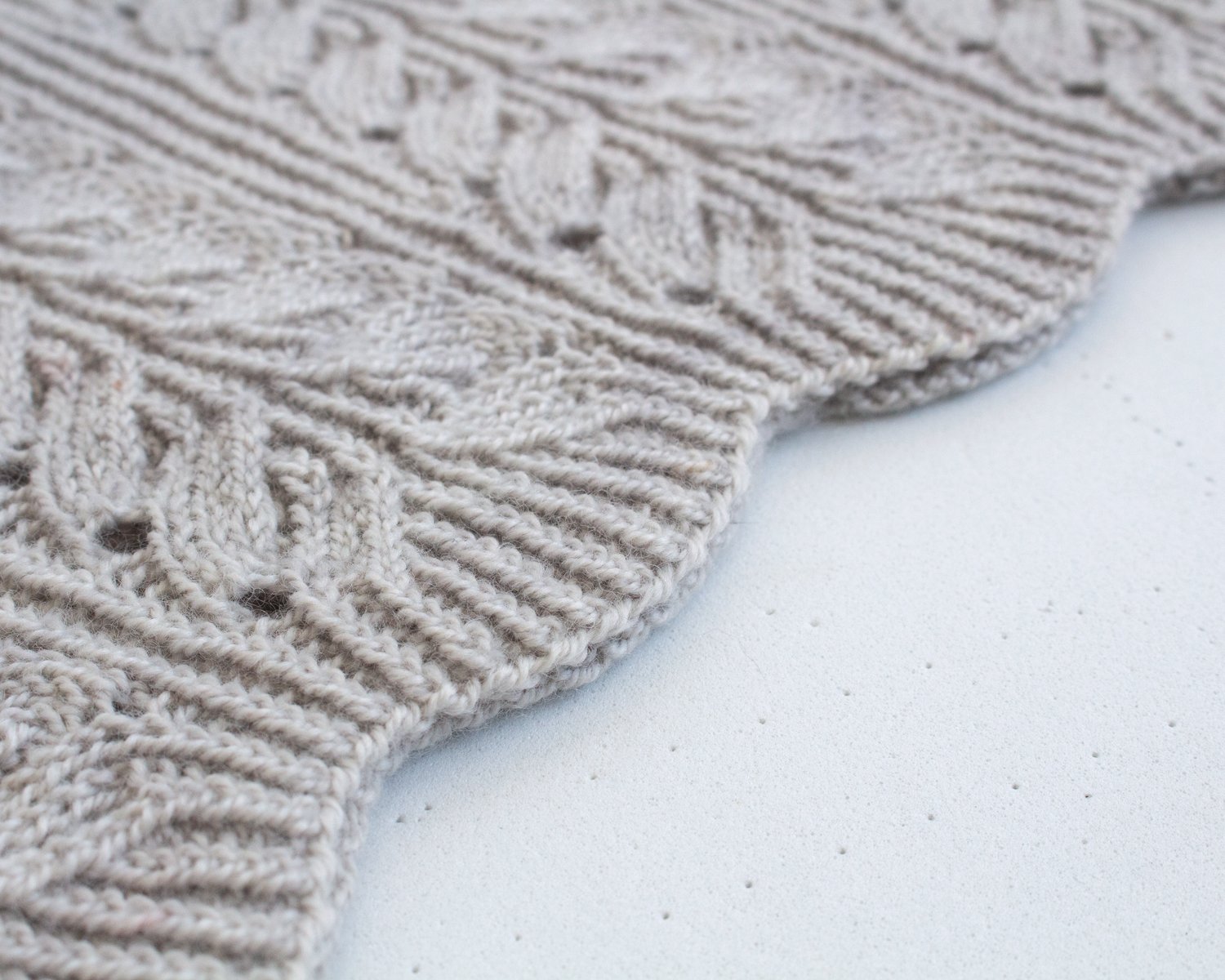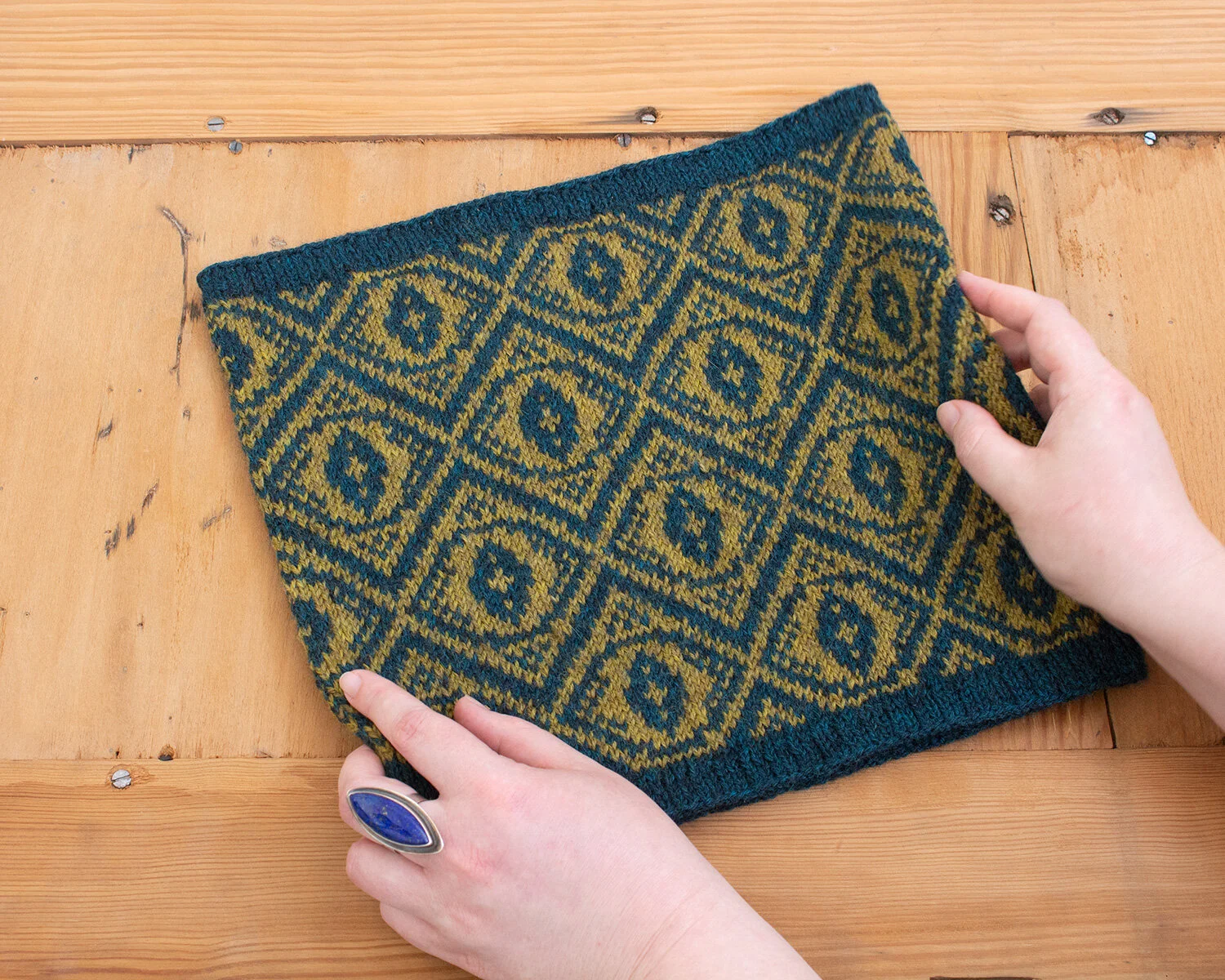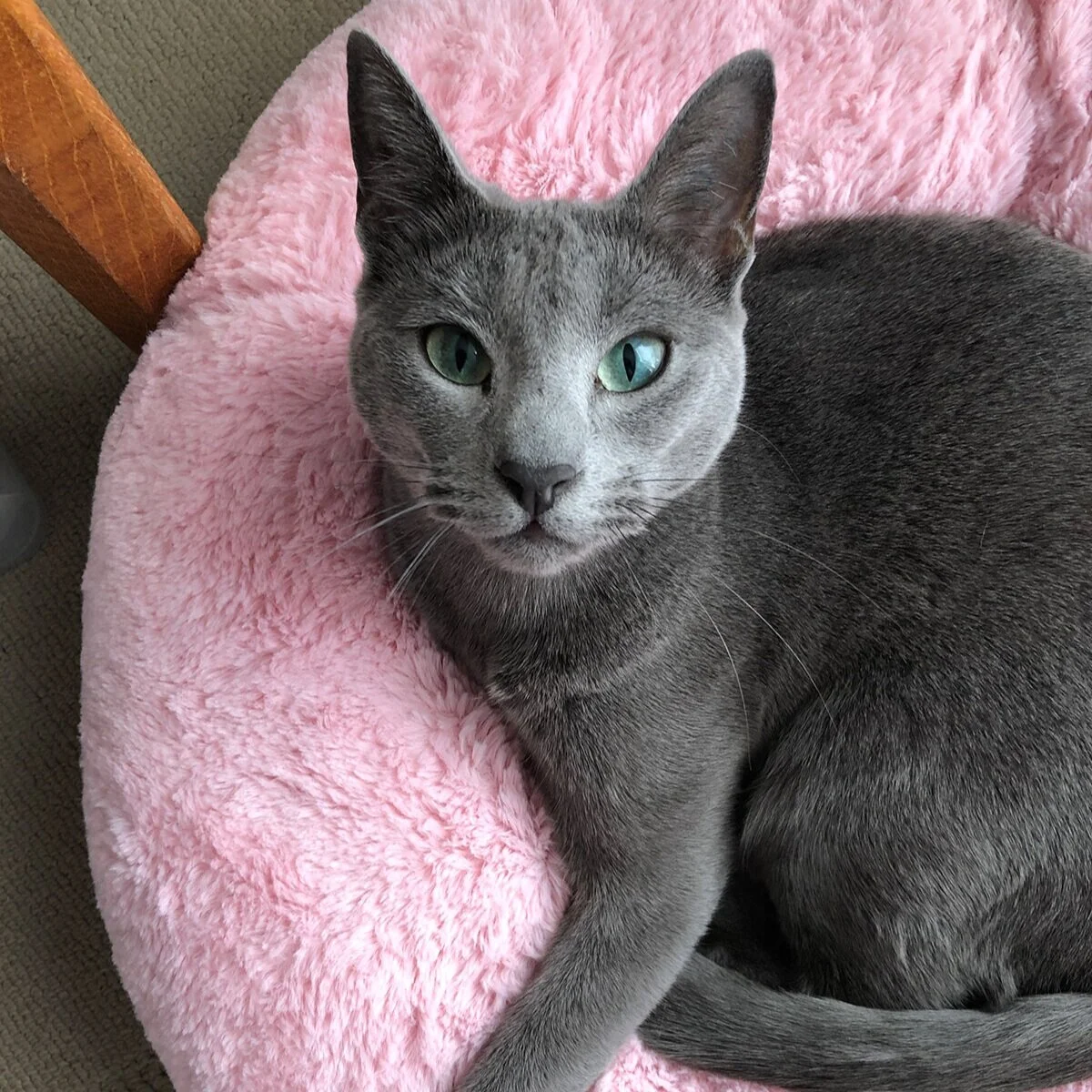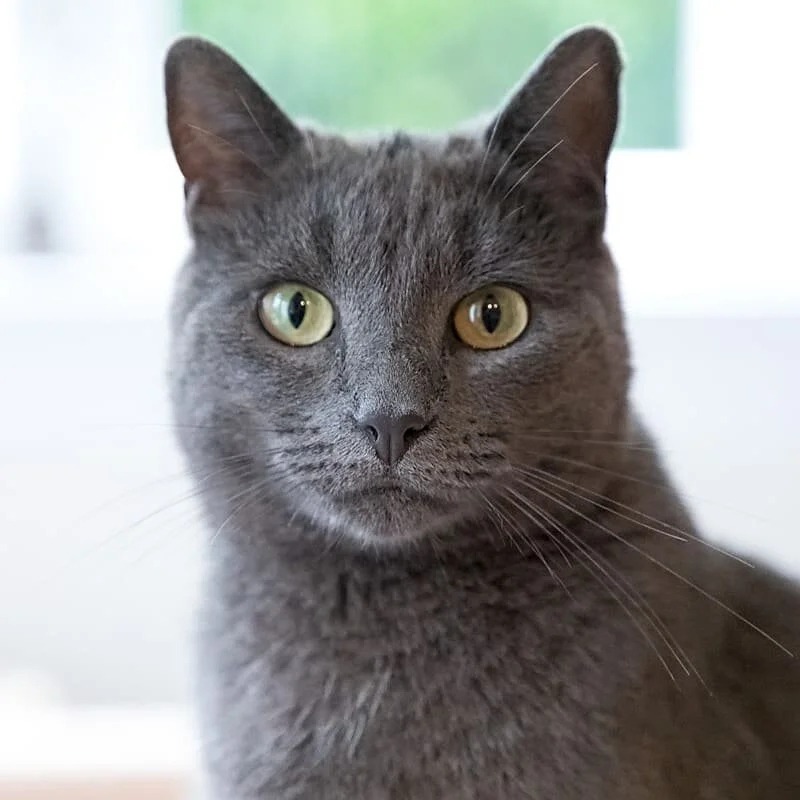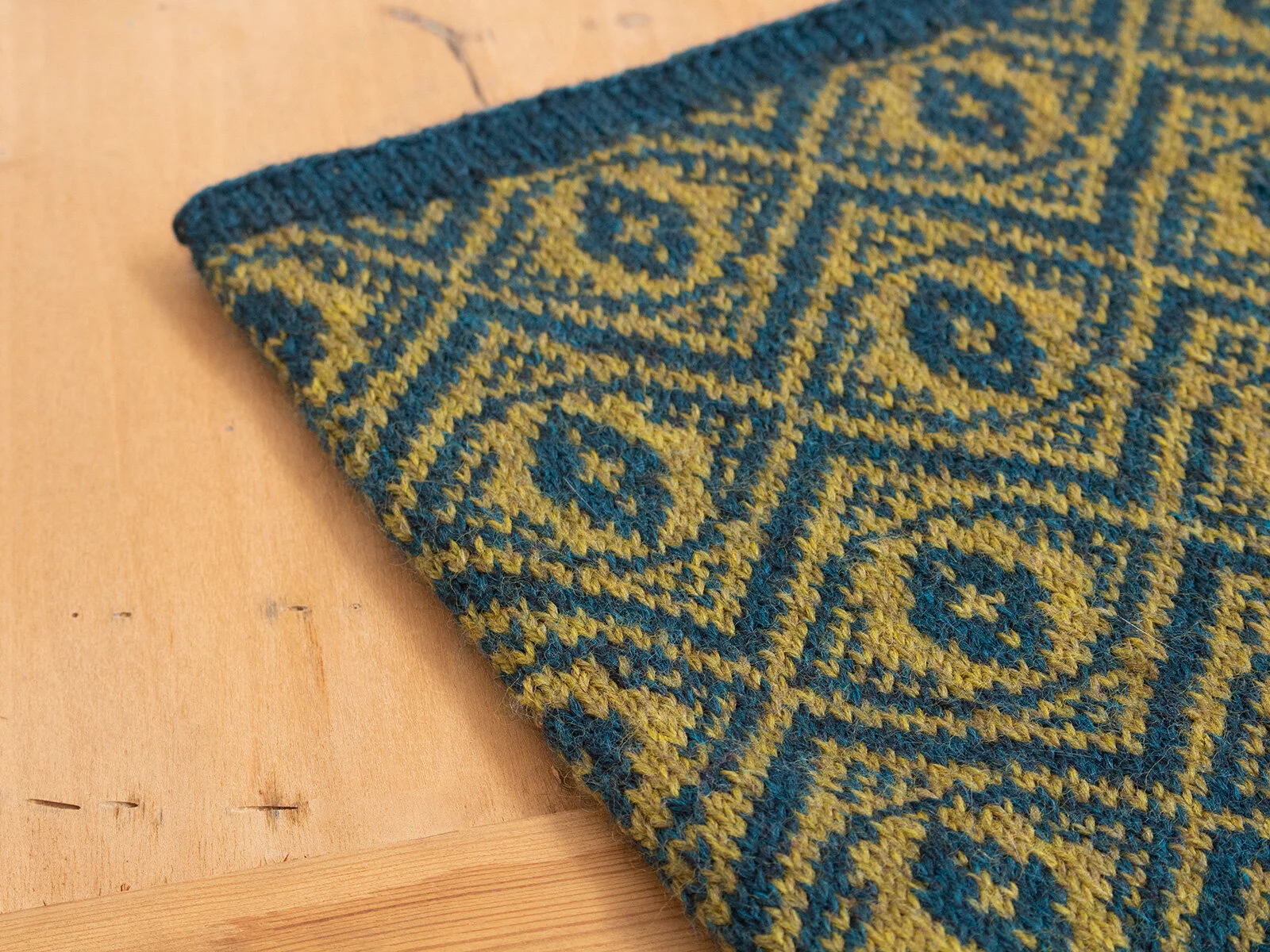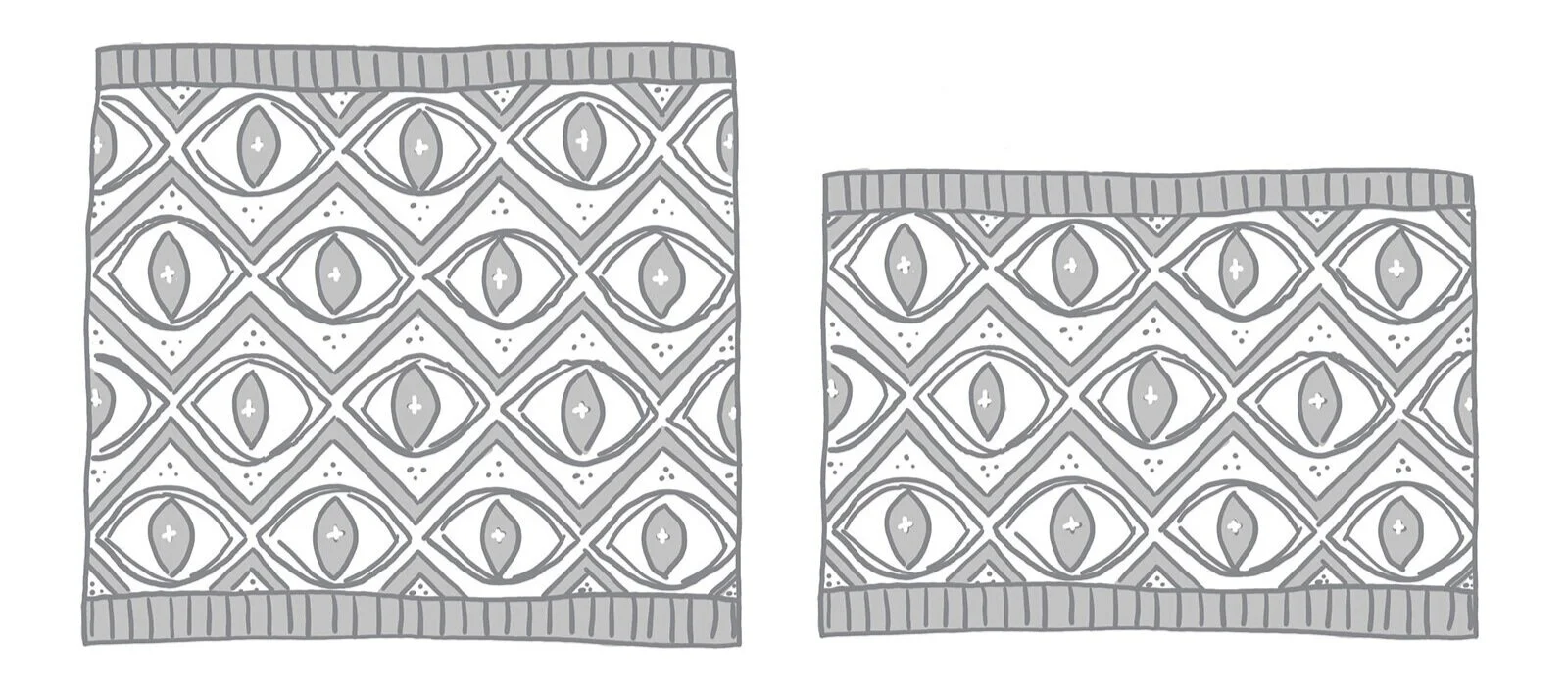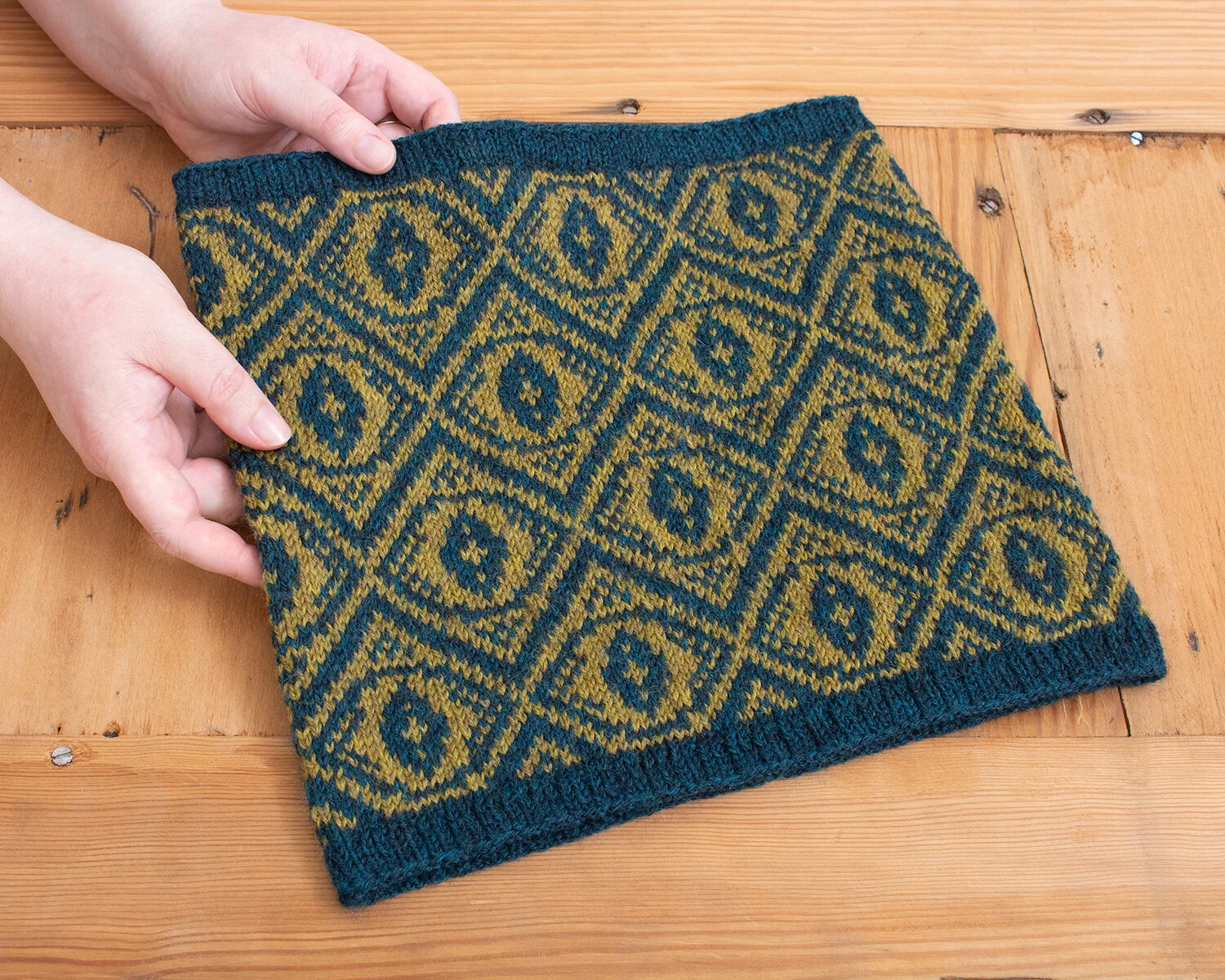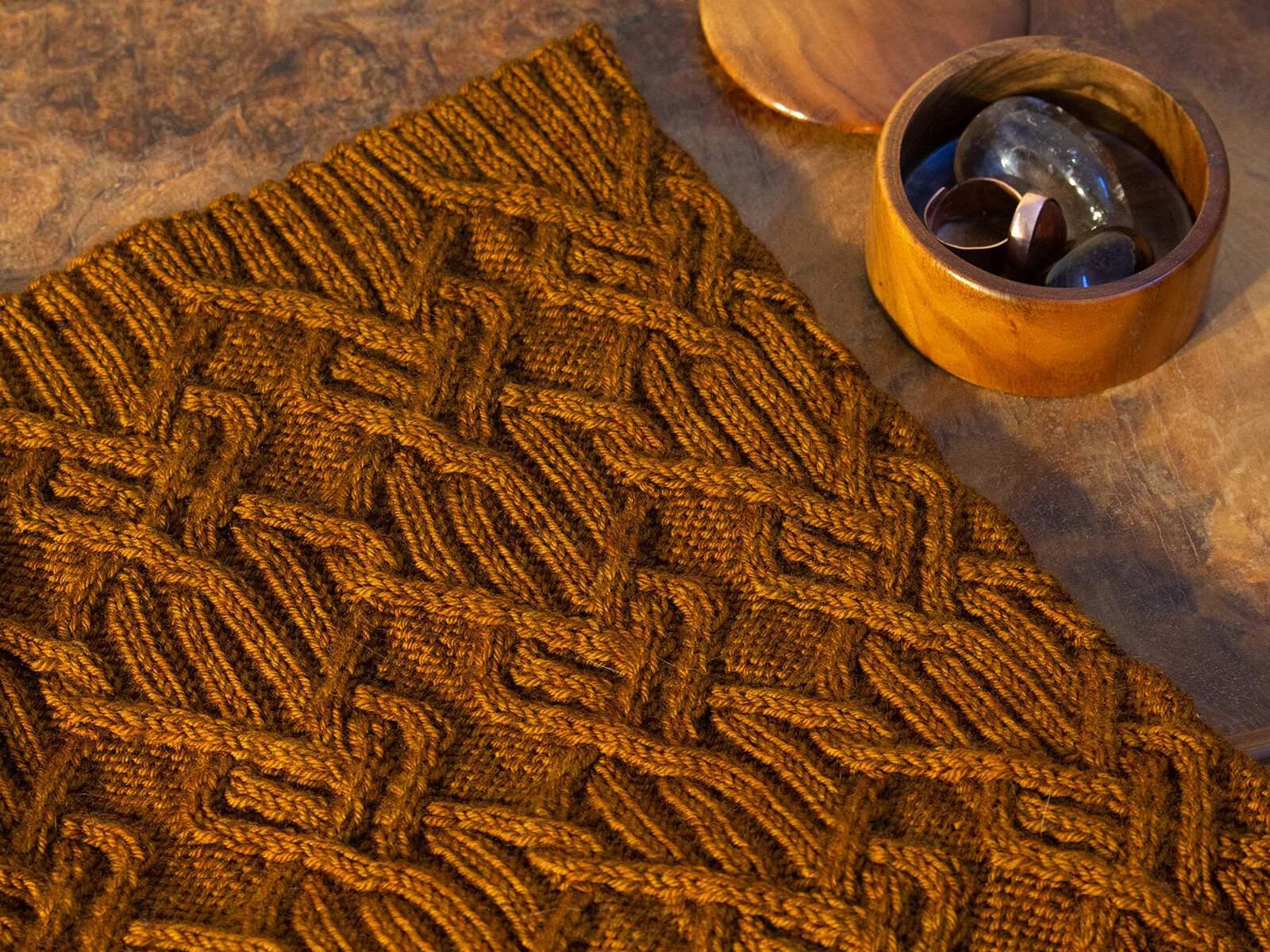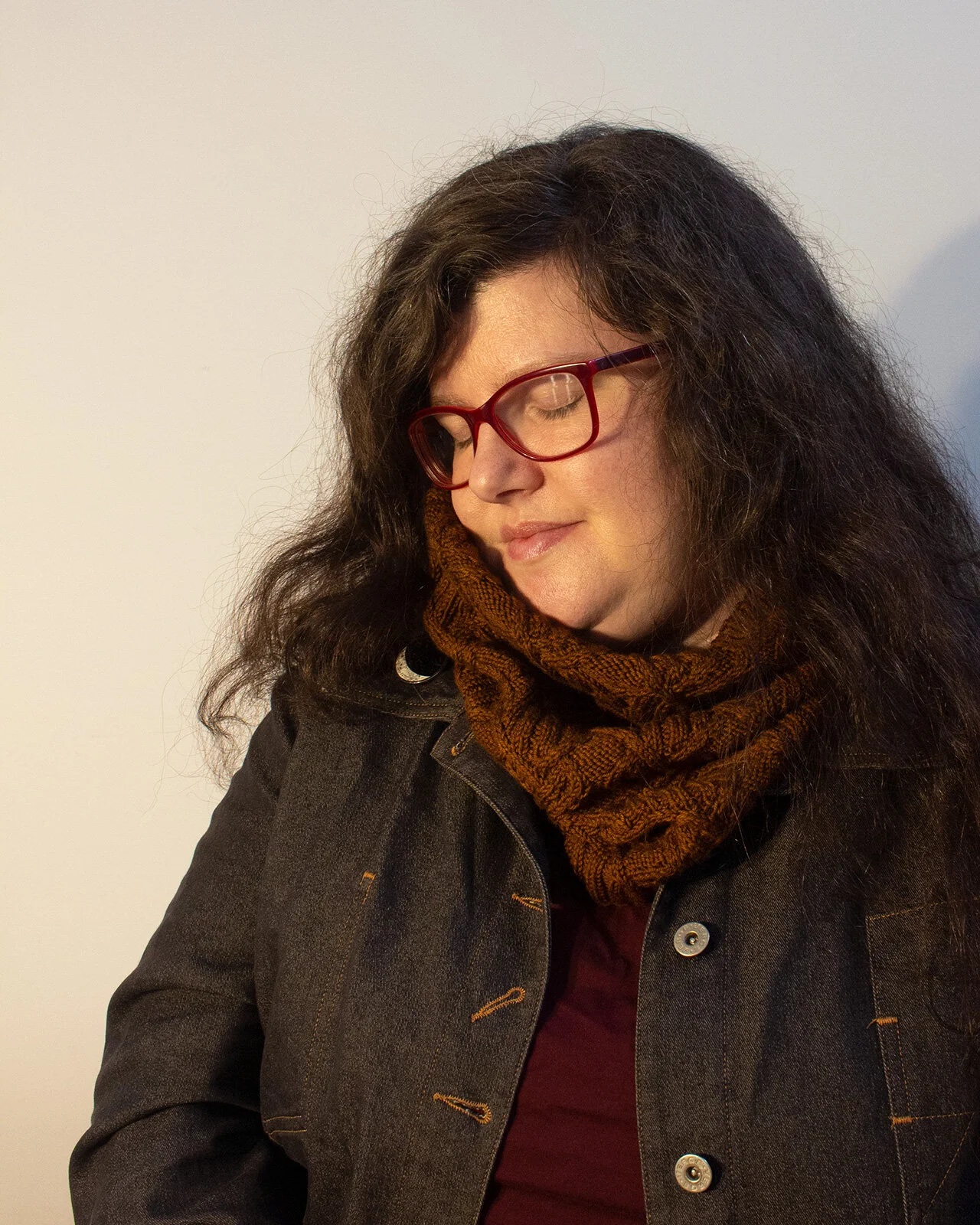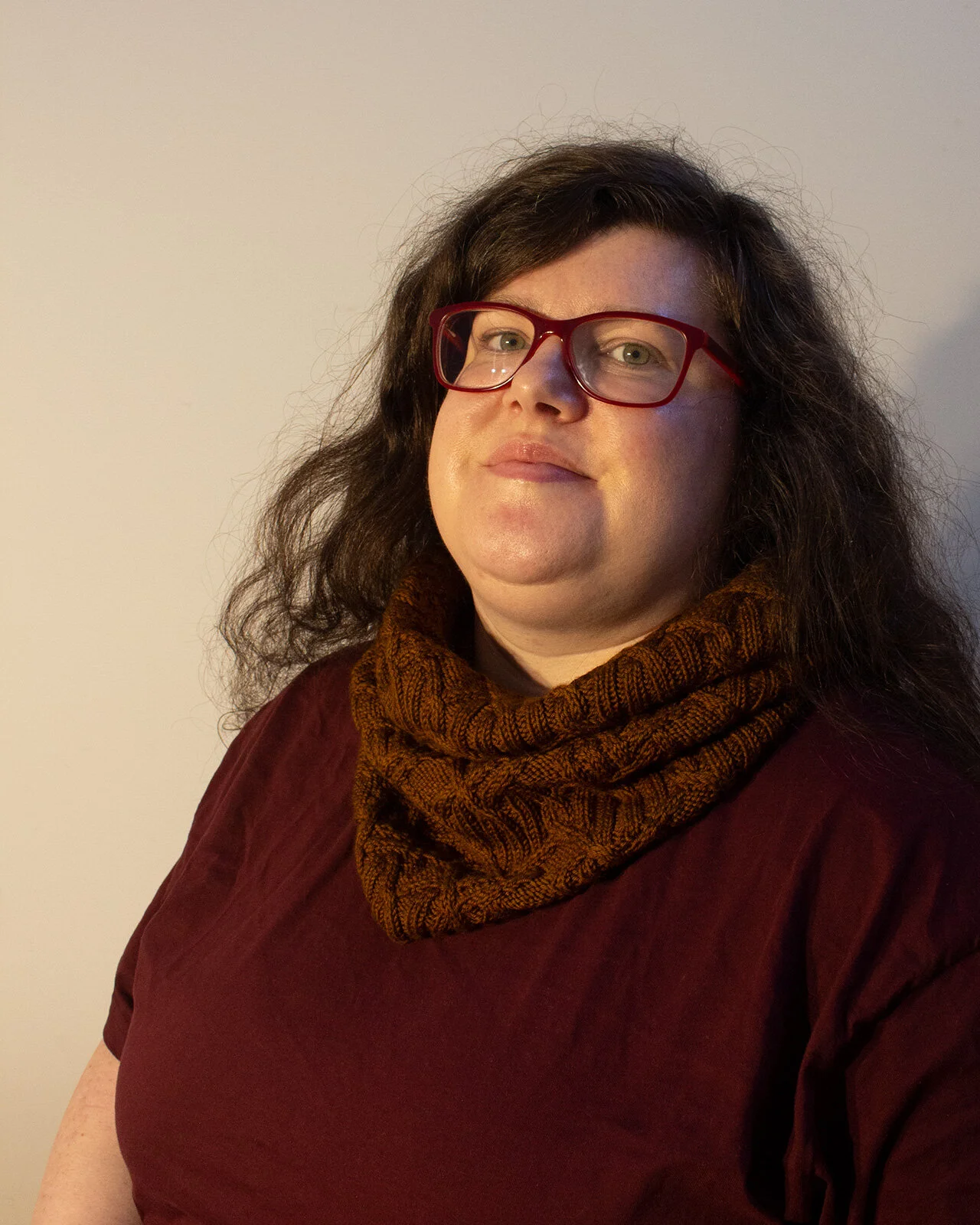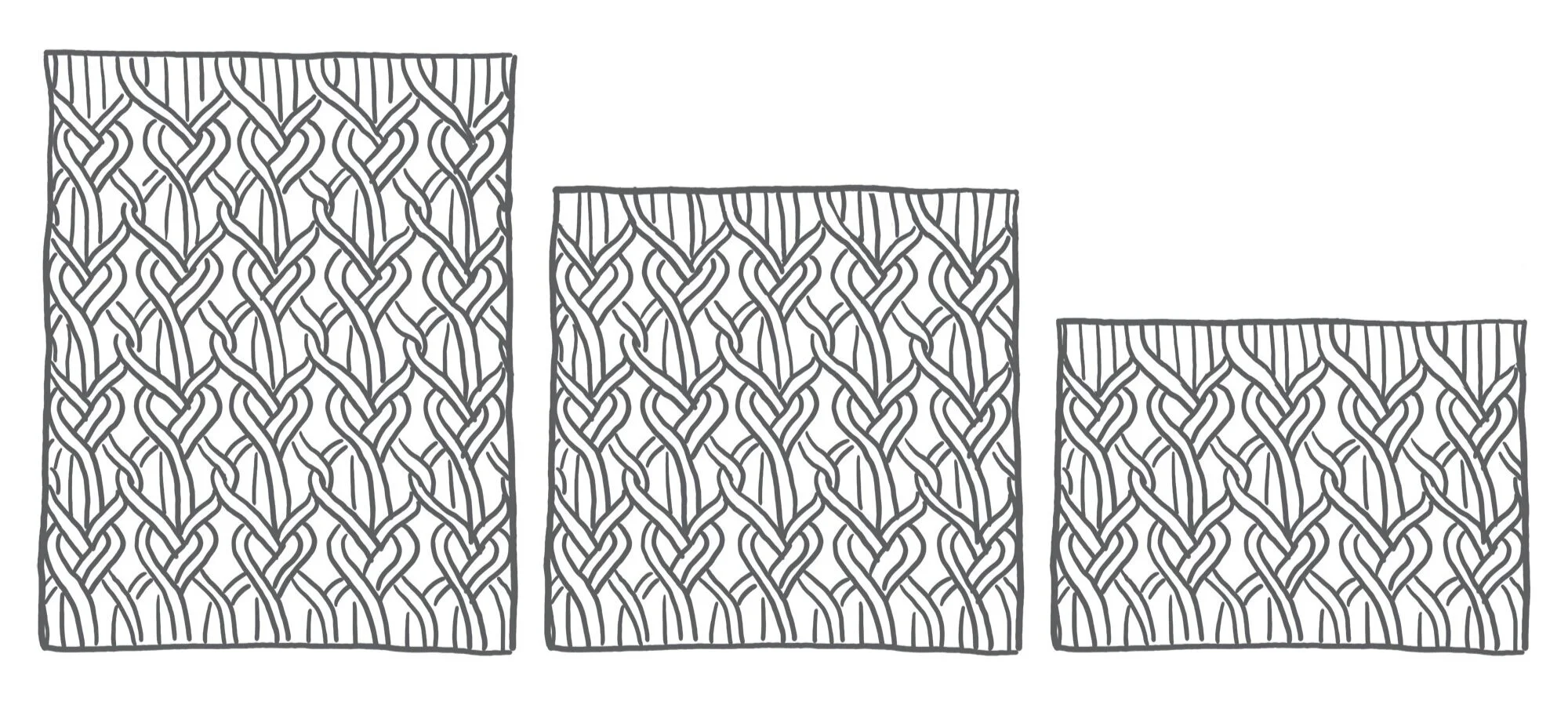My Beeswax Hat, Cowl, and Mitts have been some of my most popular patterns since I first published them nearly a decade ago. My pattern writing has evolved a lot since 2014 when I first published them, and even more since 2018 when I last updated their charts and layout. And because I want them to continue to reflect my best work as a designer, I’ve been working on a big update to polish them up.
The Beeswax Hat, Cowl, and Mitts knit in Pakihi DK from Ruataniwha Dye Studio.
The changes
My main intention was to update the ribbing instructions, which I’ve had the occasional question about over the years. But after making that change and looking more closely, I found more and more tweaks I wanted to make. One of the new changes I’ve made is updating the cables to include purl stitches, where they originally included only knit stitches for the sake of simplicity. I decided the slightly more polished look of the purl cables was worth making the switch. It doesn’t make a huge difference to the appearance of the cables, but I personally find it more satisfying!
Additional changes include a new smaller size for the Beeswax Hat (for kids!), a taller option for the Beeswax Cowl, a larger gauge option for the Beeswax Mitts, stitch counts added throughout to reflect the variable stitch pattern repeat, new schematics, and additional small tweaks to bring the patterns in line with my current style.
I blocked this Beeswax Hat over a balloon to show off the pretty crown decreases. The Beeswax Cowl in the background is the new taller size.
New samples
As part of this process I knit up some new samples to show off the new sizes. As a designer I find knitting my way through a pattern super helpful, because I can refine it as I go and catch any errors. For most of the new samples I used Pakihi DK from Ruataniwha Dye Studio, a woollen-spun blend of NZ polwarth and arapawa wool. The cables are beautifully crisp in this yarn! And for the smaller Beeswax Hat, I used Possmerino DK from Trichromat Yarns, which has a lovely soft halo and luxurious softness.
The new smaller Beeswax Hat, knit in Possmerino DK from Trichromat Yarns.
